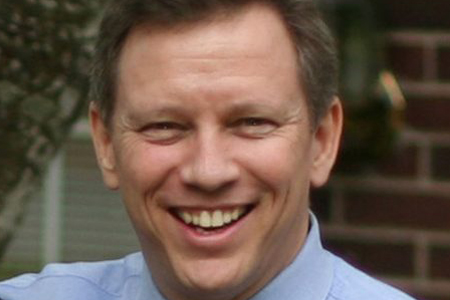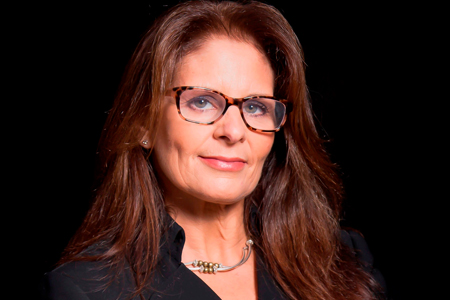The Disconnect Between The SaaS C-suite And Channel Development Teams
By Dina Moskowitz & Ted Finch
When launching a channel, you should think of it as starting a remote office, but all too often, SaaS companies make the mistake of creating an “us” vs. “them” mindset instead.
Imagine hiring a new sales rep and expecting that person to close deals right away without having any training, resources, management, or runway. That happens all too often when SaaS companies launch a channel program. Two leading SaaS experts share why the channel needs the appropriate time and attention in order to become a scalable source of revenue.
SOFTWARE EXECUTIVE: IF YOU COULD ROUND UP ALL OF THE FOUNDERS AND CEOs WHO READ THIS MAGAZINE AND GIVE THEM ONE PIECE OF ADVICE ABOUT CHANNEL PROGRAMS, WHAT WOULD IT BE?

SOFTEX: WHAT DO RESELLERS REALLY WANT FROM A SaaS VENDOR?
Finch: Resellers look for three things:
- Is your product well-positioned?
- Can I make any money through your program?
- Do you love me, and will you support me?
If you answer yes to these questions, your chances of success in the channel are very high.
SOFTEX: WHY DO YOU THINK THERE IS A DISCONNECT BETWEEN THE C-SUITE AND THE PERSON/TEAM TASKED WITH BUILDING THAT COMPANY’S CHANNEL PROGRAM? WHAT IS THAT DISCONNECT?

SOFTEX: WHAT ARE SOME OF THE UNREALISTIC EXPECTATIONS EXECUTIVE TEAMS HAVE ABOUT CHANNEL PROGRAMS?
Moskowitz: One unrealistic expectation that SaaS executive teams have about the channel is that offering a referral agreement with a commission is not the same as running a strong partner program. In fact, they should be prepared to commit resources to recruiting, onboarding, training, and activating partners. And you should continually communicate with them to ensure your solutions are always top of mind.
SOFTEX: WHAT KINDS OF TOOLS AND RESOURCES DOES A NEW CHANNEL MANAGER NEED IN ORDER TO BE SUCCESSFUL?
Moskowitz: At a minimum, any new channel manager should have a reseller agreement, an online partner portal, a well-defined commission structure, a presentation about the partner program and your solution, and a competitive matrix to help partners understand the product positioning.
SOFTEX: HOW LONG OF A RUNWAY SHOULD A CEO GIVE THAT CHANNEL MANAGER BEFORE IT’S REALISTIC TO EXPECT ROI?
Finch: If it’s a new program and you know what you’re doing, it takes 30 to 60 days to define the program, set up the reseller portal, define the policies (lead gen, deal registration, agreement, MDF), determine margins, and develop content (PowerPoints, competitive matrix, market information, demo script, videos, white papers). That’s all before you can start recruiting. It may be two to three weeks before you get your first few partners, then another week for onboarding, getting the product on their website, and announcing they’re carrying your product.
These are the things your channel manager can control. So, in a good case scenario, it may take three to four months before you’ll have your first resellers ready to sell. After that, it typically takes the reseller the same amount of time to close a deal as it does your direct sales team. So, if your average sales cycle is one week or three months, you should add that to your timeline before expecting sales or ROI.
Fortunately, it does not take a lot of resellers coming on board to quickly pay for the time and expense required. For example, if it costs you $10,000 in time and resources, and your average deal size is $5,000, then just a few resellers can make up your investment quickly. If you get 20, or even 100 resellers, you’ll get massive returns, especially if many resellers stay with you for five to 10 years. In fact, the typical channel budget has the highest ROI for any marketing activity because it has the benefit of scale.
SOFTEX: WHAT SHOULD THE EXECUTIVE TEAM LOOK FOR WHEN HIRING SOMEONE TO BUILD A CHANNEL?
Finch: There are two roles — channel marketing and channel sales — that should be filled. If you’re fortunate, you can find a “switch hitter” that has both marketing and sales experience. This is rare, but possible. If not, you typically would hire the channel marketing person first in order to recruit partners. Once you have resellers, you would bring in the channel salesperson to help your partners sell.
A channel marketer usually sets up the program, portal, and collateral and helps with mass recruiting, onboarding, and sales enablement. A good candidate will have a channel marketing background.
A channel salesperson has a sales-management role and requires direct and channel sales experience. They typically help with direct recruiting (cold calling partners or following up on hard-to-catch partners uncovered by channel marketing). They also help partners to demo the product, overcome objections, complete quotes, and coach them on how to close (with model calls and coaching calls).
SOFTEX: WHAT DOES THE C-SUITE NEED TO KNOW ABOUT HOW CHANNEL PROGRAMS ARE DIFFERENT FROM DIRECT SALES?
Finch: When setting up a channel team, you want to be aware of potential channel conflict and how to avoid it. Your direct sales reps might view the channel as competitors. Direct sales reps avoid conflict among themselves by assigning territories or by splitting accounts by name or type so they don’t prospect into others’ regions. It works similarly with the channel.
For example, a company may have inside sales work on individual sales (one to four seats in size) and refer five or more seats to partners based on their region and certification level. Another approach is to turn your salespeople into working sales managers who make direct sales, but also earn an override on the partners in their region. This gives them a financial incentive to work together.
SaaS vendors should view their channel as a regional office. Would you send them leads? Sure. Would you help them with regional promotions? Yes. This shift in perspective makes the transition easier.
SOFTEX: WHAT ARE SOME OF THE MOST COMMON MISTAKES SaaS COMPANIES MAKE WHEN THEY LAUNCH A CHANNEL PROGRAM?
Finch: The biggest mistake SaaS companies make when launching a channel is creating an “us” vs. “them” mindset instead of treating the channel as they would a “remote office.” Since they don’t manage the channel similarly to direct sales, they don’t get the same results. Consequently, they erroneously think the channel can’t sell as well as they can.
Sure, at first the channel doesn’t have as much product knowledge, but they have existing account knowledge and can rely on the SaaS vendor to help with demos, quotes, etc., until they get up to speed. If you treat the channel like you would a new salesperson and use a similar approach, you can have similarly positive results.
DINA MOSKOWITZ is recognized as one of the IT channel’s top influencers and innovators. As founder of SaaSMAX (including SaaSMAX Marketplace and the PartnerOptimizer business intelligence solution), she was recently awarded the Cloud Girls Rising Trailblazer Award and served on the prestigious CompTIA Vendor Advisory Council (she now serves on their Business Applications Council). She is also a member of the Software Executive editorial advisory board.
TED FINCH is one of the top channel and marketing experts in the high-tech industry, having launched over 450 products into the channel for over 200 vendors (including Microsoft, HP, Adobe, Corel, Intel, Aldus, Epson, AOL, Word- Perfect, Novel, Autodesk, Citrix, IBM, Western Digital, Sony, Disney, Lotus, DCA, Trusted Data, Netscape, and iOmega). He has also consulted with 170+ Fortune 500, midsize, and startups including several storage software and hardware vendors.
